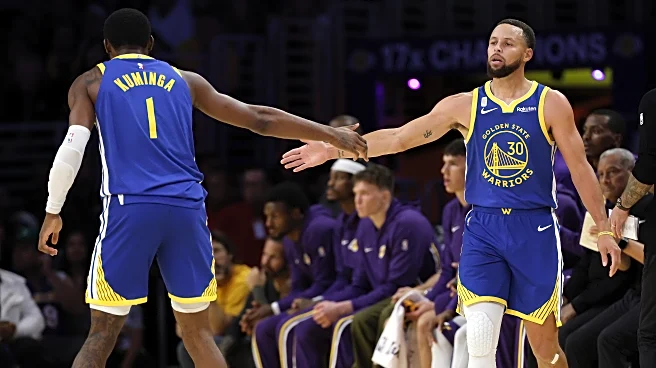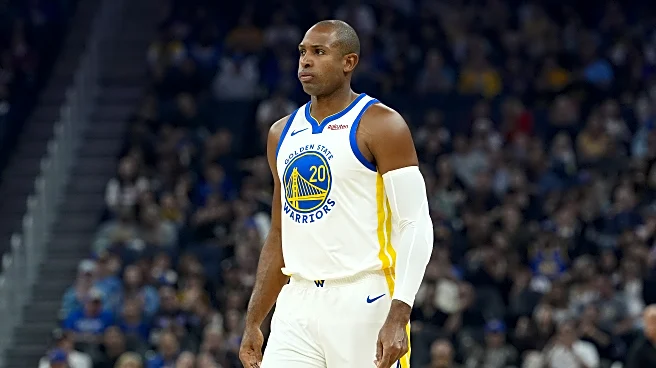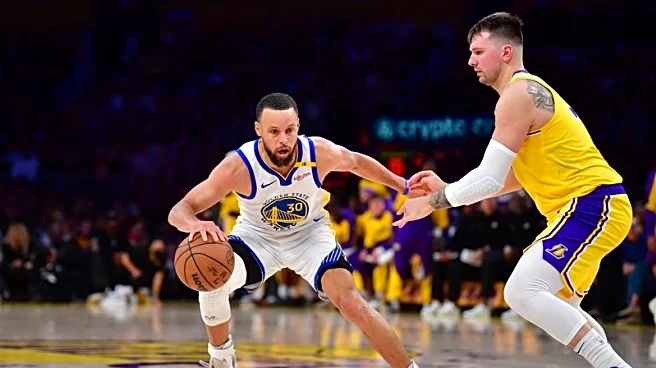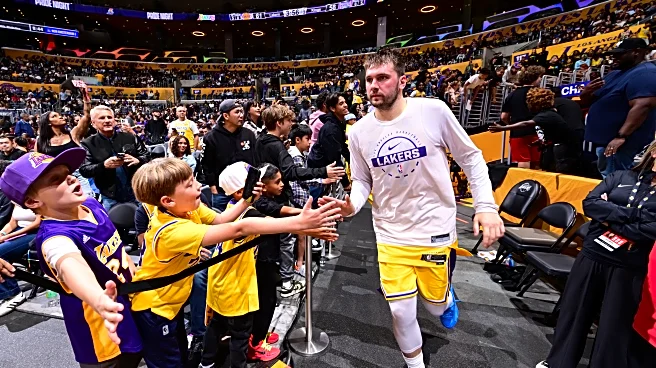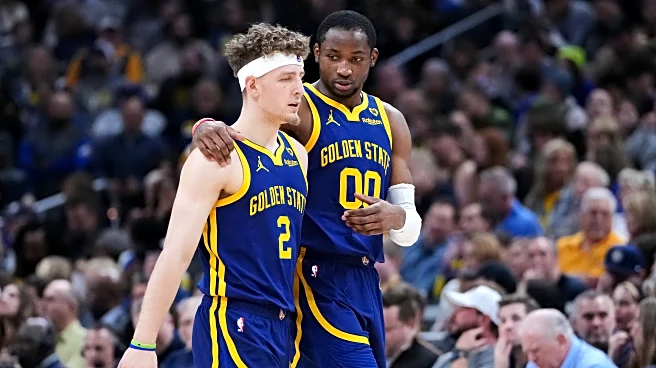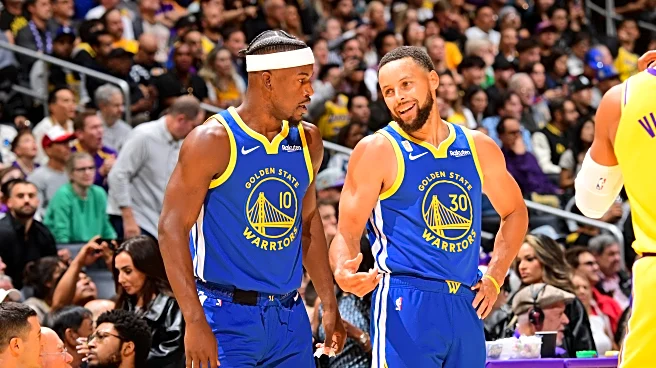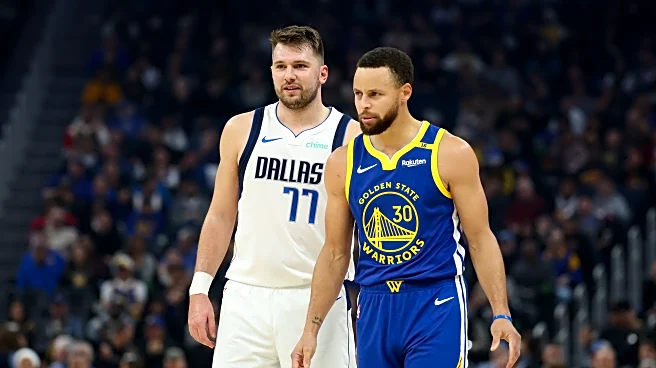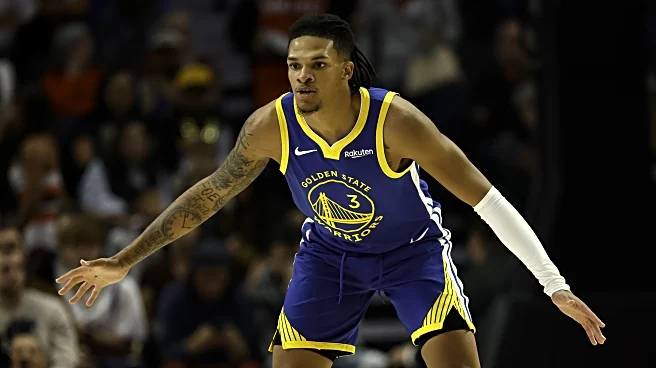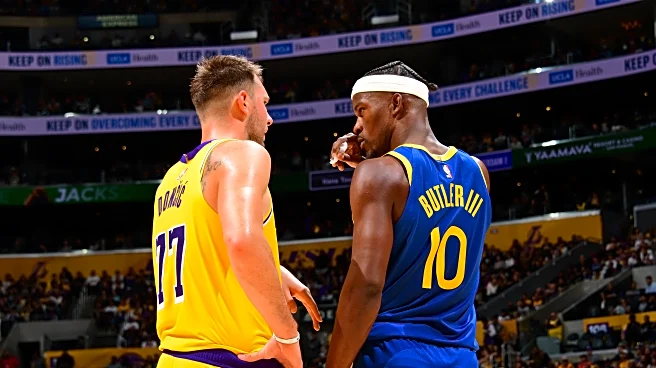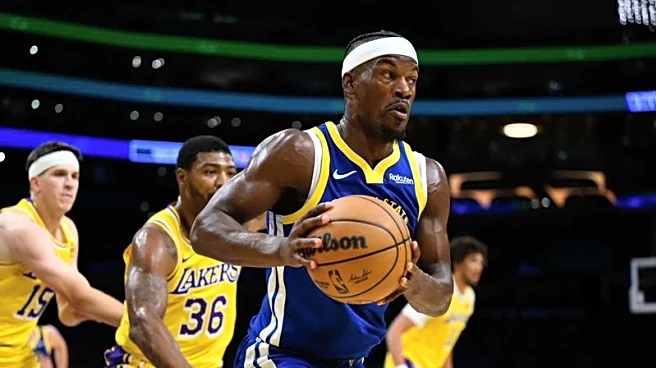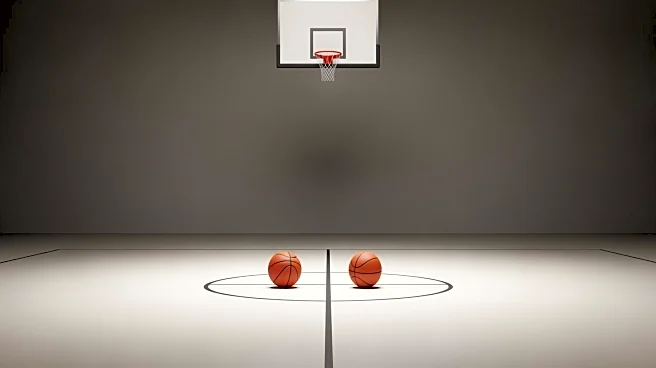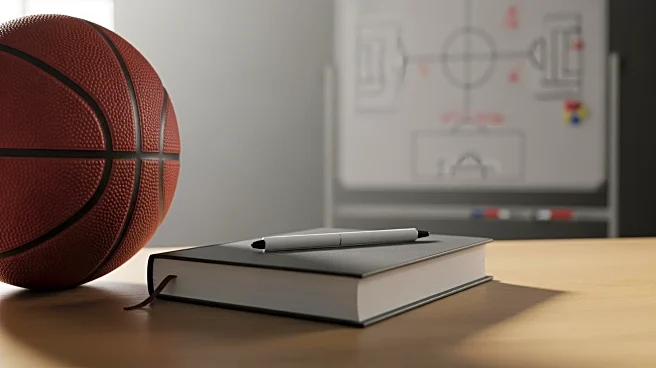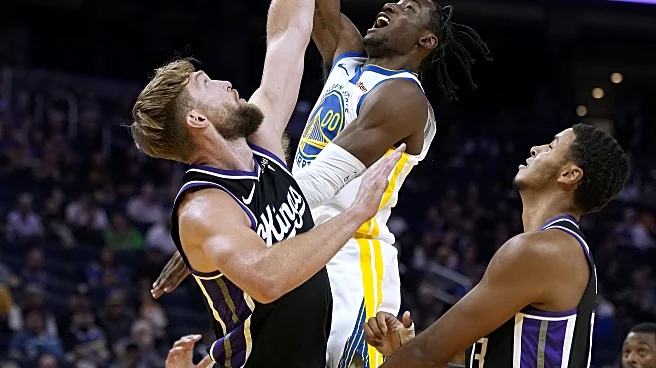At the 6:50 mark of the fourth quarter — with the Golden State Warriors guarding a comfortable-yet-uncomfortable 14-point lead against the Los Angeles Lakers — the Warriors dialed up one of their classic half-court sets. Called “Small” by Steve Kerr, it involves an orthodox play type with an unorthodox setup: a bigger wing getting a ball screen from a smaller guard. Its effectiveness varies depending on several factors, but it increases exponentially if the screener has a considerable level of gravity
through which one or multiple defenders can be sucked into its orbit.
Which is why having Steph Curry be the screener in an inverted setup is low-hanging fruit. But the proverbial cherry on top? Seeing what Jonathan Kuminga does when he gets the switch onto the smaller Gabe Vincent, drives, and draws help:

One would assume that Kuminga would force the issue against Vincent. But once he sees Deandre Ayton come over to help, he dishes to Al Horford in the dunker spot, who has a much better (i.e., wide open) look underneath.
That was one of Kuminga’s 6 assists of the night, to go along with 17 points and 9 boards. For one night, Kuminga not only scored sufficiently enough to supplement Jimmy Butler (31 points on 73.7% True Shooting, which included a perfect 16-of-16 clip on free throws) and Steph Curry (23 points on 65.6% True Shooting) — he crashed the boards, emphasized ball movement, and created looks for teammates, all while being Luka Dončić‘s primary defender.
Defending Dončić will always be an exercise in imperfection and, on some nights, futility. The Slovenian superstar finished the game with 43 points on 68.5% True Shooting, despite Steve Kerr choosing to go with Kuminga because of a publicly stated desire to limit the 39-year-old Horford’s minutes but with an implicit desire to have someone capable of marking Dončić on the floor with Moses Moody sidelined due to a calf injury.
Kuminga excelled against Dončić in spots, enough to get some stops and unleash the Warriors in transition, where Kuminga as well as Curry are potent weapons:

But the effort to become an important piece of the whole instead of trying to be the piece is noteworthy. With the kind of athletic gifts he possesses, it should be a no brainer for him to play off of Curry more, not only in direct ball screen setups but also on off-ball screens. Having the wherewithal to slow things down in the half court, diagnose the situation, and make the correct decision goes a long way in an offense whose main currency is making the correct decision.

Arguably the second most important currency behind making the correct decision? Effort and tenacity, especially on the offensive boards.

“That rebound (from Kuminga) is what everyone in the world’s been waiting to see,” Draymond Green said after the game. “You got that athleticism, you going to make big plays like that. You’ve got superstar potential, you going to make big plays. Those are game winning plays… We can all ask for opportunity. When you ask for opportunity, you must deliver. I think he’s been very vocal about his opportunity, and he delivered.”
“I thought Jonathan’s offensive rebound was kind of the play of the night for me,” Kerr said. “Just sealing the game with that extra possession we scored on.”
Cautious optimism of Kuminga slotting into the complementary role that everyone envisioned him embracing is perhaps the right approach. After all, one game does not necessarily portend overall success (or failure). Kuminga will still need to prove that he can replicate this effort on a consistent basis. In all likelihood, a 4-of-6 clip from beyond the arc will continue to be the exception rather than the norm. But that will be forgiven if this version of Kuminga — a blue-collar workhorse who makes the correct decisions — shows up nightly.
If that turns out to be the case, not only will it lift plenty of the burden on the shoulders of Curry and Butler — it will enhance their ability to shoulder the offense, providing them with an opportunity to close games with clear minds, fresh legs, and near-perfect execution. Much like Kuminga above, Butler linked up with Curry on a couple of inverted ball screen possessions that created simple-yet-potent offense.
If there ever was evidence of Curry being an all-time-great screener, it was on this possession below:

Curry’s orbit rivals the gravitational pull of Jupiter, as Vincent and Dončić found out. Both of them are drawn toward Curry — leaving Butler, the ball handler, alone to drive to the rim and draw the foul, a sequence that continues to awe and amaze no matter how many times we have all seen it. It also continues to defy basketball convention, in the sense that the general rule on defense is to stop the ball; with Curry, it’s to stop the greatest shooter of all time, even if he doesn’t have the ball.
When Butler and Curry repeat their inverted link-up on the next possession, they add a twist: having Curry come up to get the handoff, thus faking the screen. Butler subsequently sets the screen, Curry draws two to the ball, Butler receives the ball in the short roll, and passes to the cutting Gary Payton II, completing the 4-on-3 advantage created by Curry’s pull.

There’s not much rocket science needed to explain why the Butler-Curry screening duo is so effective.
“Steph Curry and Jimmy Butler made (the pick-and-roll action) effective,” Kerr said after the game. “Two of the best players in the league. You do that because you don’t want to turn it over, you want to run some clock, and you want to get a good shot. So you put your two best players in the play and both guys made good shots and good plays.”
Even if Curry had the requisite support he needed and will continue to need, the chaotic effect he had on the Lakers’ defense was perpetually present. Even something as simple as running to the corner and staying pat was enough for Payton to saunter his way to an open rim.

On an ATO (after timeout) play, Curry runs off of a middle “zoom” action (a screen followed by a handoff) to get him downhill, with Austin Reaves tagging from the weak side to cover Horford’s dive. Curry’s attention-grabbing nature, coupled with Horford’s roll gravity, frees rookie Will Richard on the baseline drift for the three.

Even the classic chemistry between Curry and Green made a triumphant return, not only on the offensive side of the floor, where Curry immediately cuts backdoor to counter a top-lock, with Green making a laser-precision pass:

But also on the defensive end of the floor. After a couple of possessions in which Dončić successfully got Curry to switch onto him by setting a screen on Curry’s man, a quick adjustment was made on the fly: having Green quickly come up to bump Curry off of Dončić (“scram” switch), with Curry hedging out against subsequent attempts to switch him onto Dončić:

Game 1s out of an 82-game season are an exercise in expectation management. They still count on the win-loss slate, but it is only the initial sprint out of the gates in a grind-it-out marathon. Much can be taken away, while simultaneously not much should be carved in solid stone. There is reason for optimism, in that roles are being defined, the pecking order is showing some semblance of delineation, and identities are being formed on both ends of the floor. But in order to form solid conclusions about this team, consistency should be the name of the game. Consistency must revolve around Curry (as it always has), with Butler and Green to complement him. It will be interesting to monitor if Kuminga embraces that ethos of consistency, along with the rest of the supporting cast.
